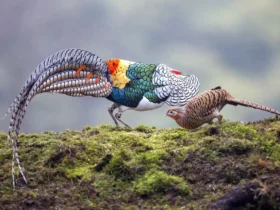Robins are a type of bird species found in various parts of the world. There are several species of robins belonging to different genera and families. The information I provide here will primarily focus on the American Robin (Turdus migratorius), which is one of the most well-known and recognized robin species.
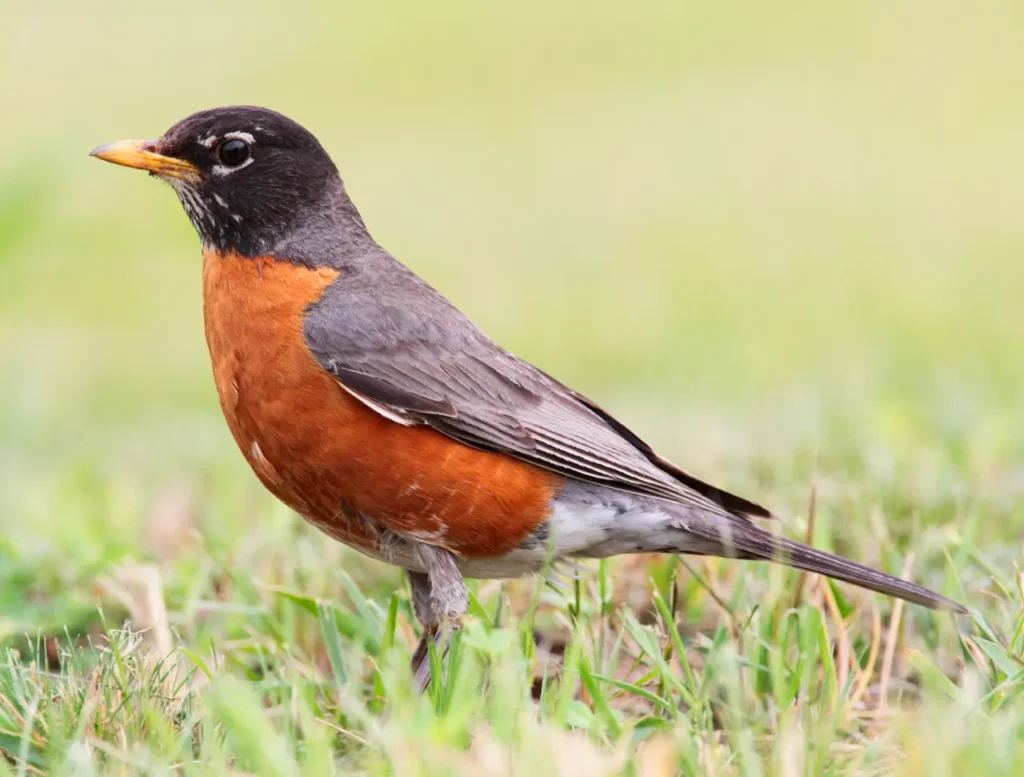
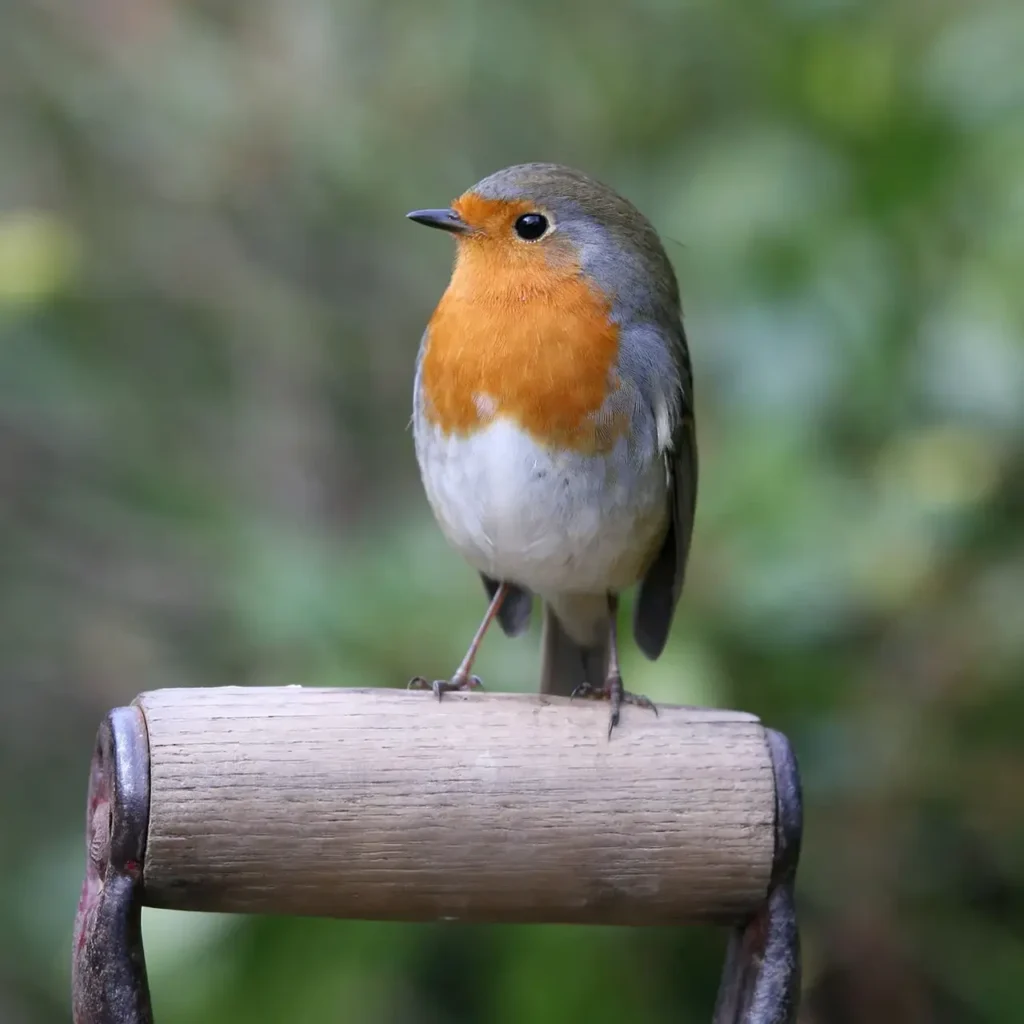
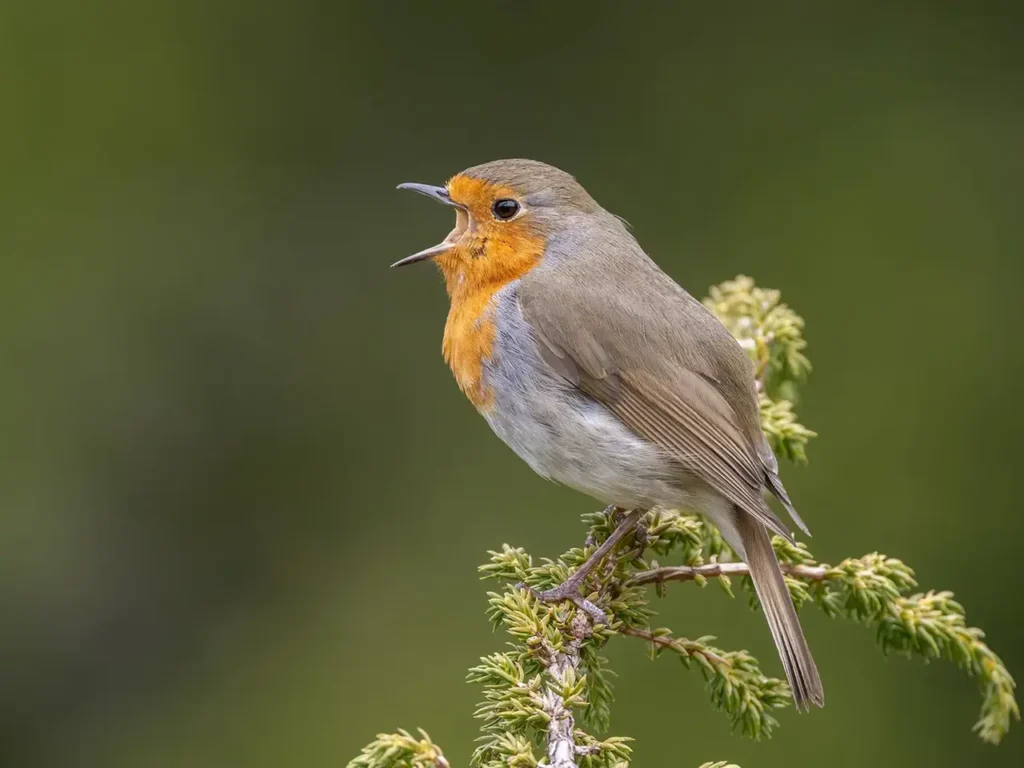
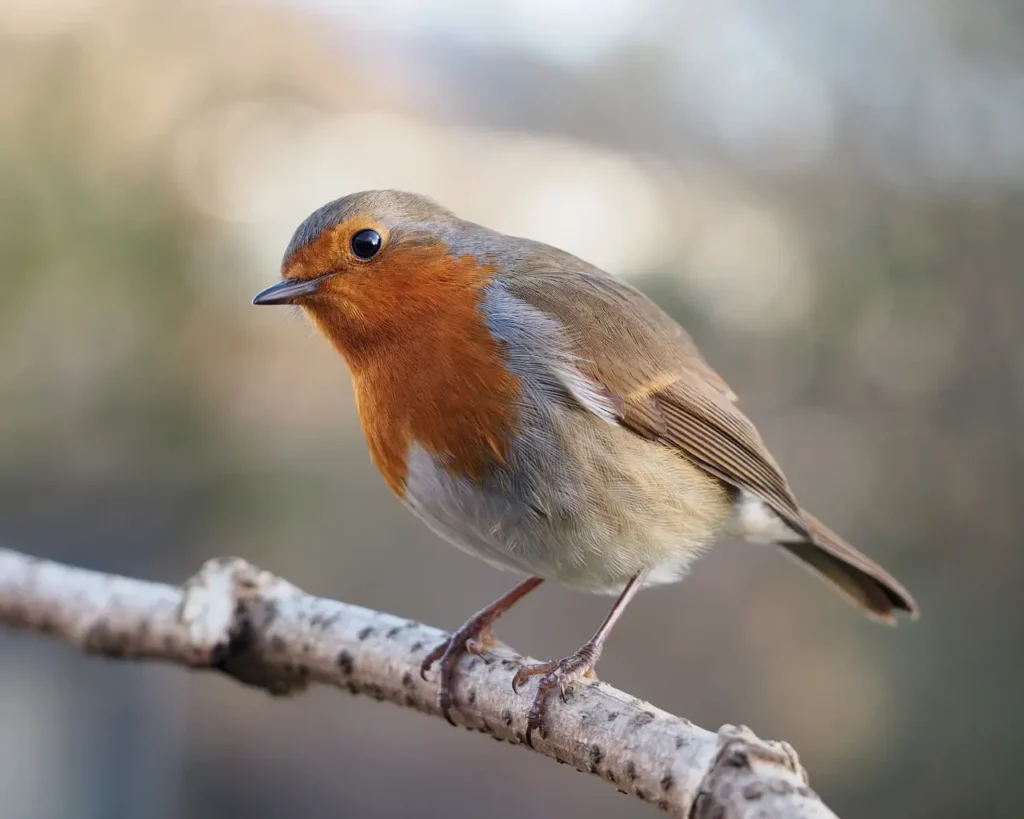
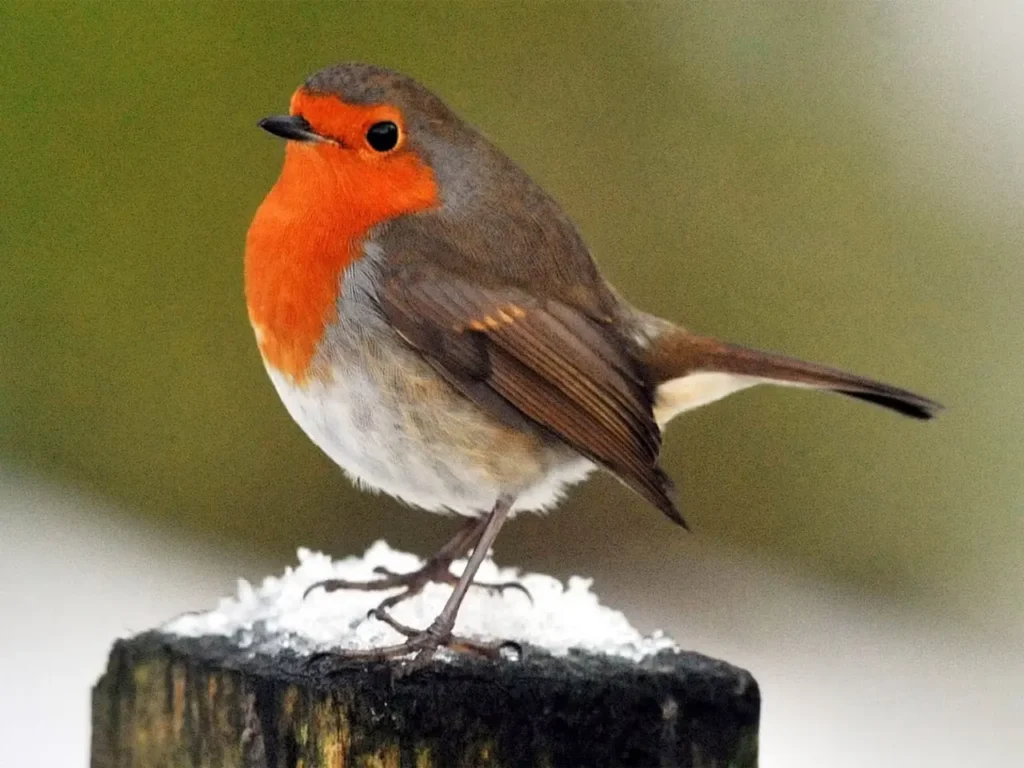
Physical Characteristics:
- Size: American robins are medium-sized birds, typically measuring about 9-11 inches (23-28 cm) in length.
- Color: They have a distinctive appearance, with a reddish-orange breast and belly, grayish-brown back, and a white throat with streaks.
- Markings: The American robin has a white eye-ring around its dark eyes, and its wings feature white markings that are visible in flight.
Habitat and Distribution:
- Range: American robins are found across North America, from Alaska and northern Canada down to Mexico.
- Habitat: They inhabit a variety of environments, including forests, woodlands, parks, gardens, and urban areas. They are often associated with lawns and open spaces where they can forage for food.
Behavior and Diet:
- Foraging: Robins are known for their distinctive hopping behavior while foraging on the ground. They feed on a wide range of food, including insects, worms, fruits, and berries.
- Migration: Many American robins are migratory birds, moving south during the winter and returning to their breeding grounds during the spring and summer.
- Song: They have a melodious song that consists of a series of clear, flute-like notes. Their song is often associated with the arrival of spring.
Breeding:
- Nests: Robins build cup-shaped nests usually made of grass, twigs, and other plant materials, lined with mud and finer materials.
- Eggs: Their eggs are blue-green in color and are usually around 3/4 inch (2 cm) long.
- Young: Robins are known for their relatively quick breeding cycle. They can have multiple broods in a single year.
Cultural Significance:
- Robins are often associated with the arrival of spring due to their migratory behavior and singing during that season.
- They have become a popular symbol in folklore, literature, and even Christmas traditions.
It’s important to note that there are different species of robins in other parts of the world as well, and they may have different physical characteristics, behaviors, and habitats. Some of these species may not be closely related to the American robin, despite sharing the same name.
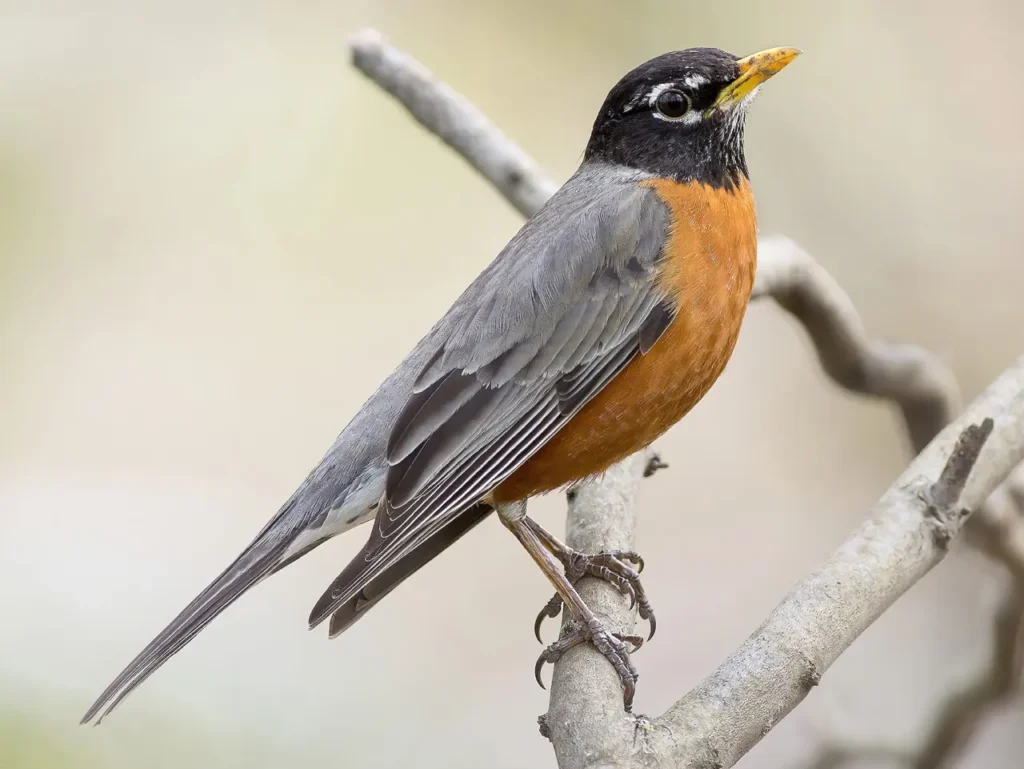
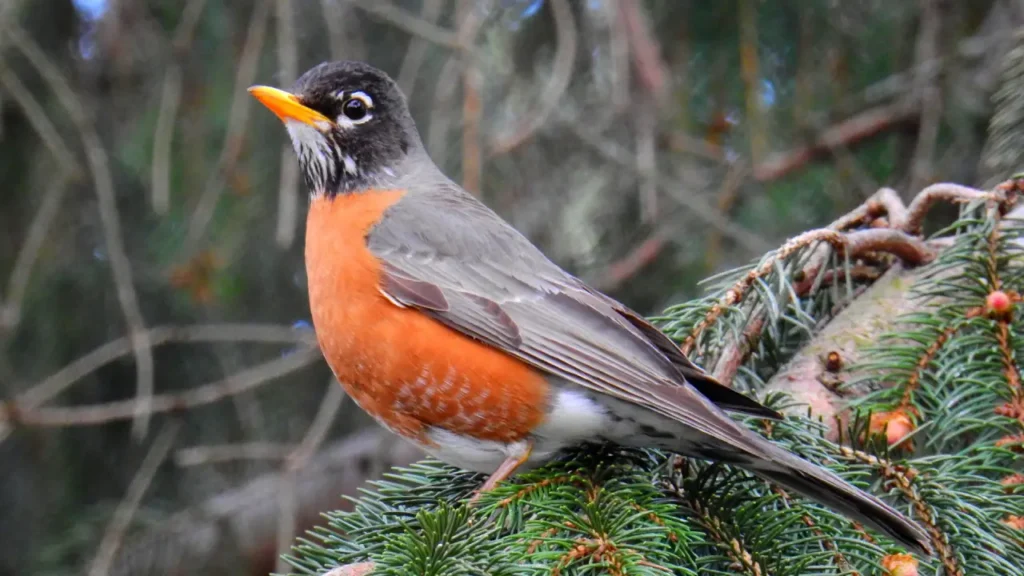
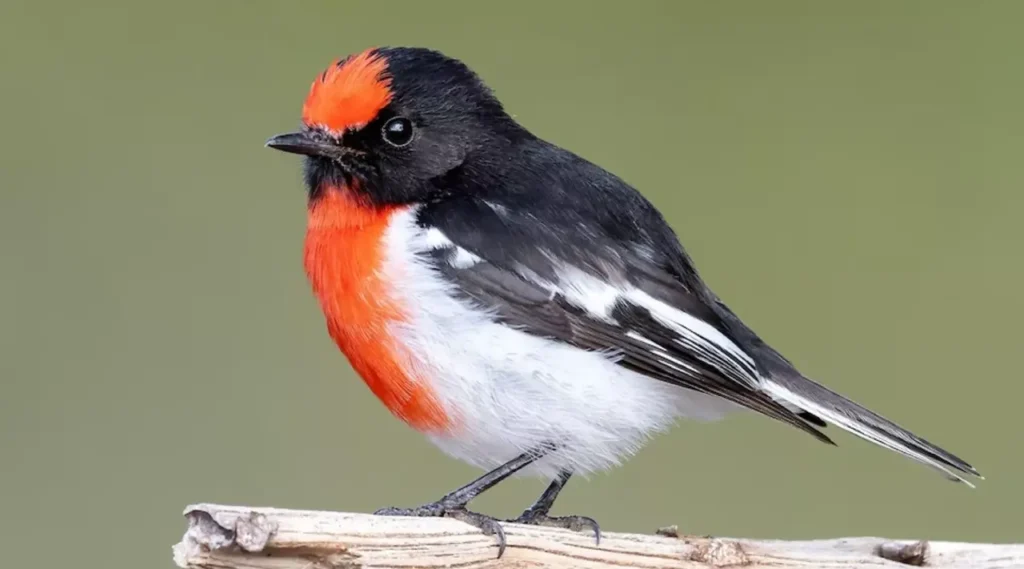
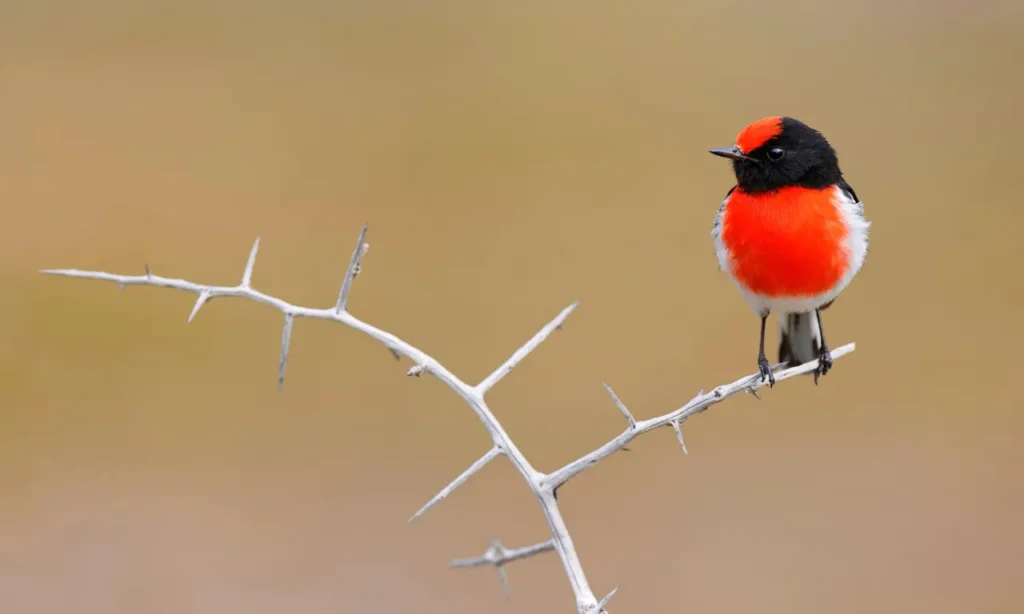
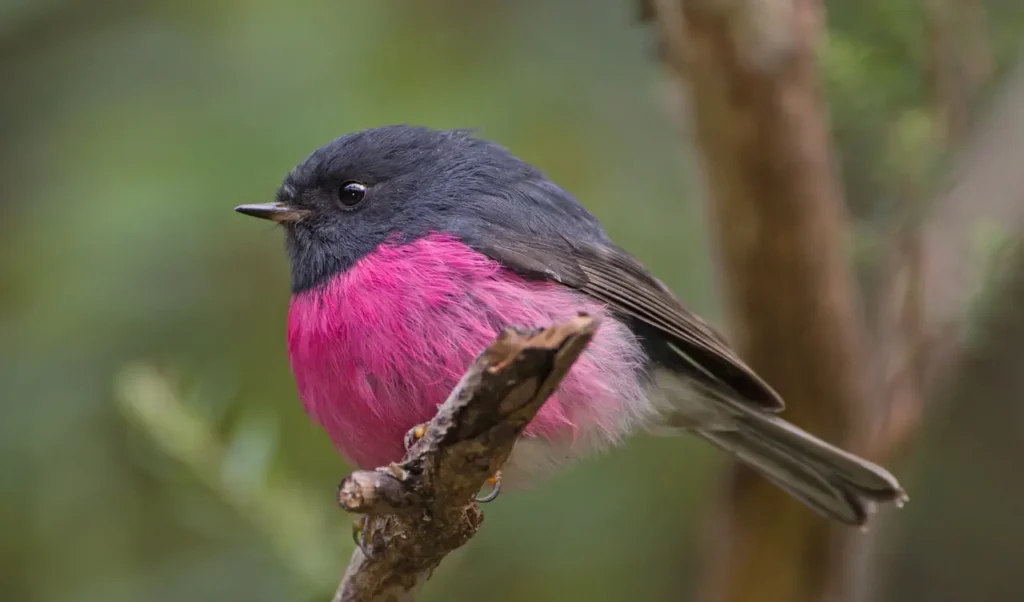
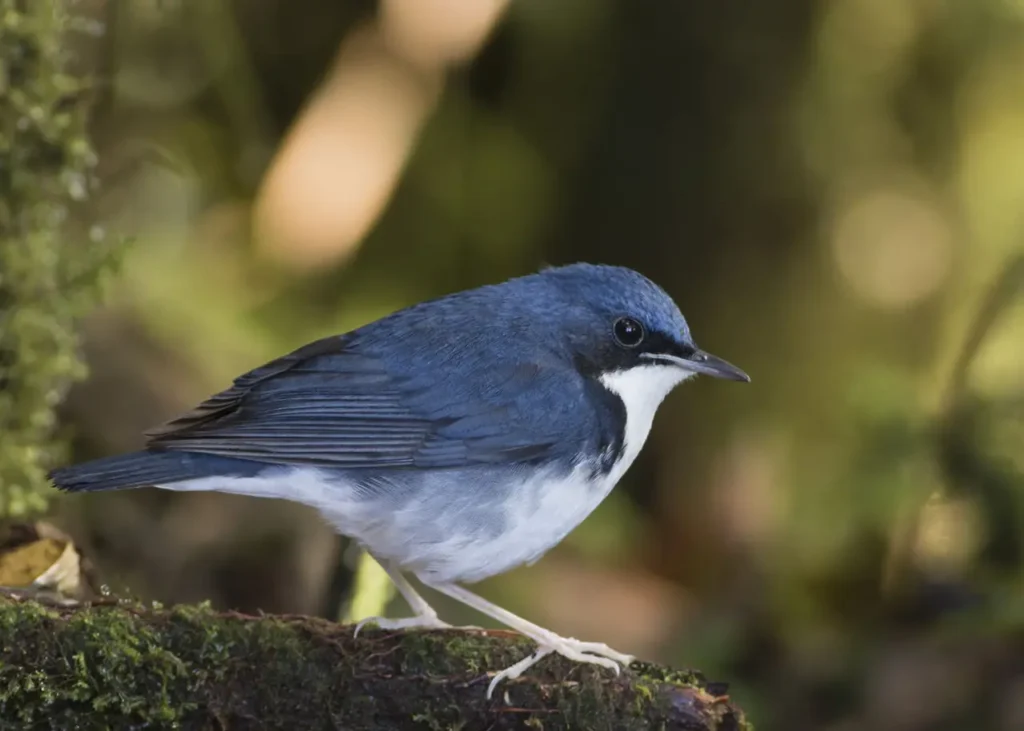
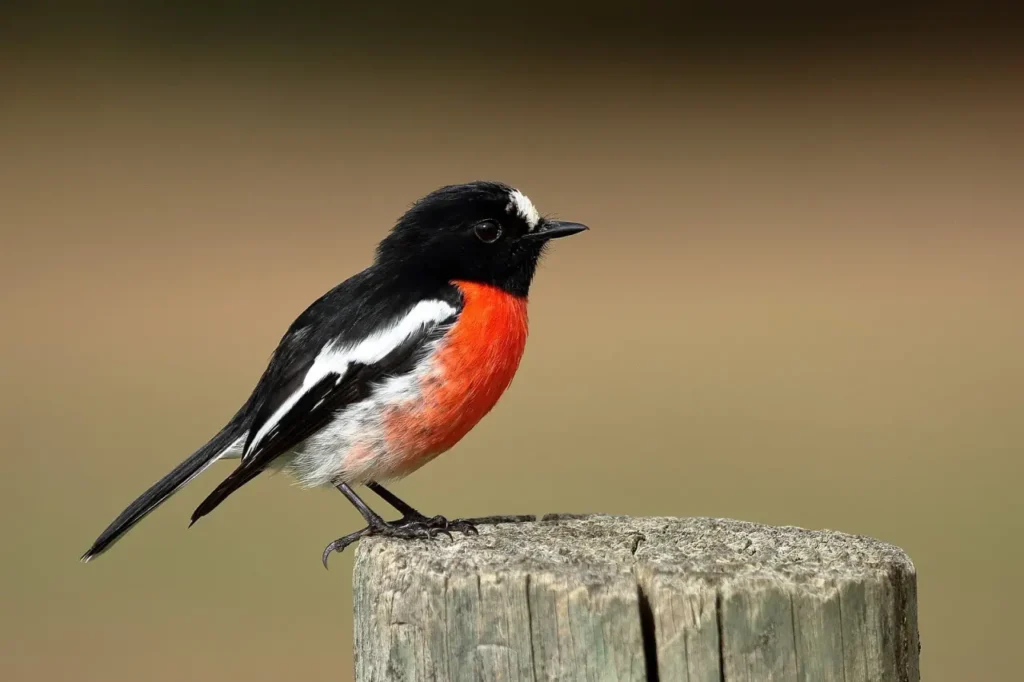
Type of Robin Birds
Robins are a well-known and beloved bird species that are found in various parts of the world. While the American Robin (Turdus migratorius) is perhaps the most recognized species, there are several other robin species with similar characteristics and names in different regions. Here are some notable types of robin birds:
- American Robin (Turdus migratorius): This is one of the most familiar robin species in North America. It’s known for its distinctive orange-red breast and melodious song.
- European Robin (Erithacus rubecula): Found in Europe, this robin has a red or orange breast and is associated with Christmas due to its appearance on holiday cards.
- Australian Robin (Petroicidae family): There are various species of robins in Australia, often known as Australian Robins or Red Robins. They belong to the Petroicidae family and include species like the Flame Robin, Scarlet Robin, and Eastern Yellow Robin.
- Rufous-tailed Robin (Luscinia sibilans): This robin species is found in parts of Asia, including the Himalayas and Southeast Asia. It has a distinctive rufous (reddish-brown) tail.
- Japanese Robin (Larvivora akahige): Also known as the Japanese Redstart, this bird is found in Japan and parts of Asia. Males have striking black and orange plumage.
- Indian Robin (Saxicoloides fulicatus): This robin species is found in the Indian subcontinent. Males have a black body with a white shoulder patch, while females are more subdued in color.
- Siberian Rubythroat (Calliope calliope): This small passerine bird is found in Siberia and parts of Asia. The male has vibrant ruby-red throat feathers.
- White-throated Robin (Irania gutturalis): Found in parts of Asia, including the Middle East, this robin species has distinctive black and white plumage.
- Siberian Blue Robin (Luscinia cyane): This robin is found in eastern Asia, including Siberia and parts of China. Males have blue plumage on the upperparts.
- European Black Redstart (Phoenicurus ochruros): While not a true robin, this bird is sometimes referred to as a “black redstart.” It’s found in Europe and parts of Asia and has black and gray plumage with a reddish tail.
- Rufous-tailed Rock Thrush (Monticola saxatilis): Another species that’s not a true robin but shares the name, this bird is found in parts of Europe and Asia. Males have striking rufous tails.
- Collared Bush Robin (Tarsiger johnstoniae): Found in parts of Asia, including the Himalayas, this robin species has a distinctive white collar on its neck.
- Firethroat (Luscinia pectardens): This robin is found in the Himalayas and parts of Asia. It’s known for its bright orange throat.
- Rufous-backed Robin (Turdus rufopalliatus): Found in parts of Central America, this robin species has a rufous-colored back.
- White-rumped Shama (Copsychus malabaricus): Also known as the White-rumped Robin, this bird is found in South and Southeast Asia. It’s known for its melodious song and striking black and white plumage.
- Blue-capped Rock Thrush (Monticola cinclorhyncha): Found in parts of Asia, including the Himalayas and Southeast Asia, this bird has a blue cap and is often seen in rocky habitats.
- Orange-headed Thrush (Geokichla citrina): This robin species is found in South and Southeast Asia. Males have a bright orange head and yellowish underparts.
- Japanese Bush Warbler (Horornis diphone): Also known as the Japanese Nightingale, this bird is found in East Asia. Despite the name, it’s not closely related to true warblers and is sometimes called a “bush warbler.”
- Common Nightingale (Luscinia megarhynchos): While not a true robin, the Nightingale is often associated with the robin due to its beautiful song. It’s found in Europe and parts of Asia.
- Robin Accentor (Prunella rubeculoides): Found in the Himalayas and parts of Asia, this bird has a similar appearance to robins but belongs to a different family.
- White-browed Bush Robin (Tarsiger indicus): This robin species is found in the Himalayas and parts of Asia. Males have a distinctive white eyebrow.
- Golden Bush Robin (Tarsiger chrysaeus): Also known as the Himalayan Bluetail, this bird is found in the Himalayas and has golden-yellow plumage.
- Black-throated Blue Robin (Luscinia obscura): Found in parts of Asia, including the Himalayas, this robin species has black plumage and a blue throat.
- Black-faced Robin (Petroica (Melanodryas) bicolor): This robin species is found in parts of Australia and has distinctive black and white markings on its face.
- Pacific Robin (Petroica multicolor): Native to Australia and nearby islands, this robin species comes in various color morphs, including black and white.
- Flame Robin (Petroica phoenicea): Another robin species from Australia, the Flame Robin is known for its fiery orange-red plumage.
- Scarlet Robin (Petroica multicolor): This robin species also hails from Australia and has a striking scarlet breast.
- Ribbon-tailed Astrapia (Astrapia mayeri): Found in New Guinea, this bird has long ribbon-like tail feathers and iridescent plumage.
- Red-capped Robin (Petroica goodenovii): Native to Australia, this robin species has a distinctive red cap on its head.
- Pink Robin (Petroica rodinogaster): Another robin from Australia, this bird has soft pink plumage and is known for its sweet song.
- Daurian Redstart (Phoenicurus auroreus): Found in parts of Asia, including Siberia and China, this bird has striking red plumage.
- Japanese White-eye (Zosterops japonicus): Also known as the Mejiro, this bird is found in East Asia and is recognized by its bright eye-ring.
- Cape Robin-Chat (Cossypha caffra): Found in Southern Africa, this bird is known for its melodious song and is not closely related to true robins.
- Indian Blue Robin (Luscinia brunnea): This robin species is found in the Indian subcontinent and has striking blue plumage.
- Siberian Rubythroat (Calliope calliope): This small bird is found in Siberia and parts of Asia, and males have a vibrant ruby-red throat.
- Golden-fronted Leafbird (Chloropsis aurifrons): Found in South and Southeast Asia, this bird has bright green and yellow plumage.
- Brown-chested Jungle Flycatcher (Rhinomyias brunneatus): Found in Southeast Asia, this bird has a chestnut-colored chest and is not closely related to true robins.
- Red-breasted Robin (Petroica rosea): Native to Australia, this robin species has a red breast and is known for its boldness.
- Collared Bush Robin (Tarsiger johnstoniae): Found in the Himalayas and parts of Asia, this bird has a distinctive white collar on its neck.
- Pied Bush Chat (Saxicola caprata): Found in South Asia and Africa, this bird has a contrasting black and white plumage.
- Blue Whistling Thrush (Myophonus caeruleus): This bird is found in parts of Asia, including the Himalayas, and has striking blue plumage.
- European Stonechat (Saxicola rubicola): While not a true robin, this bird is often referred to as a “stonechat.” It’s found in Europe and parts of Asia.
- Asian Brown Flycatcher (Muscicapa dauurica): This bird is found in Asia and is known for its brown plumage and distinctive call.
- Bornean Whistler (Pachycephala hypoxantha): Native to Borneo, this bird has a yellow face and throat and is known for its melodious song.
- Japanese White Wagtail (Motacilla alba): Found in Asia, this bird is recognized by its black and white plumage and distinctive tail-wagging behavior.
- White-browed Robin (Poecilodryas superciliosa): Native to Australia, this bird has a white eyebrow and is often found in forests.
- African Red-eyed Bulbul (Pycnonotus nigricans): This bird is found in Africa and is recognized by its red eye-ring and melodious song.
- Black Redstart (Phoenicurus ochruros): While not a true robin, this bird is often associated with urban areas in Europe and parts of Asia.
- Common Redstart (Phoenicurus phoenicurus): This bird is found in Europe and parts of Asia and has striking red tail feathers.
- Black-faced Monarch (Monarcha melanopsis): Found in the Pacific Islands, this bird has a black face and is known for its song.
- Tambourine Dove (Turtur tympanistria): Native to Africa, this bird is known for its distinctive call that sounds like a tambourine.
- Hill Blue Flycatcher (Cyornis banyumas): This bird is found in parts of Asia and is known for its blue plumage and insect-catching behavior.
- Siberian Blue Robin (Luscinia cyane): This bird is found in Asia, including Siberia and parts of China, and males have blue plumage.
- Chestnut-capped Thrush (Turdus ruficapillus): Native to South America, this bird has a chestnut-colored crown and is known for its song.
- Rufous-tailed Scrub Robin (Cercotrichas galactotes): Found in parts of Europe and Africa, this bird has rufous tail feathers.
- Golden Whistler (Pachycephala pectoralis): Native to Australia, this bird has bright yellow plumage and is known for its varied songs.
- African Stonechat (Saxicola torquatus): Found in Africa and parts of Europe and Asia, this bird has a contrasting plumage.
- Rufous-tailed Robin (Luscinia sibilans): Found in Asia, including the Himalayas, this bird has a rufous (reddish-brown) tail.
- White-crowned Robin-Chat (Cossypha albicapillus): Found in Africa, this bird has a white crown and is known for its melodious song.
- Eurasian Blackbird (Turdus merula): While not a true robin, this bird is closely related and is found in Europe, Asia, and North Africa.
- Black-breasted Thrush (Turdus dissimilis): Native to Southeast Asia, this bird has black and white plumage and a distinctive song.
- Red-flanked Bluetail (Tarsiger cyanurus): Found in Asia, including the Himalayas, this bird has striking blue and orange plumage.
- Blue-winged Pitta (Pitta moluccensis): Native to Southeast Asia, this bird has vibrant blue and green plumage.
- Pied Bush Chat (Saxicola caprata): Found in South Asia and Africa, this bird has a distinctive black and white plumage.
- Cape Robin-Chat (Cossypha caffra): Found in Southern Africa, this bird is known for its melodious song and striking plumage.
- White-rumped Shama (Copsychus malabaricus): Found in South and Southeast Asia, this bird is known for its melodious song and striking black and white plumage.
- Japanese White-eye (Zosterops japonicus): Also known as the Mejiro, this bird is found in East Asia and is recognized by its bright eye-ring.
- Japanese Paradise Flycatcher (Terpsiphone atrocaudata): Found in parts of Asia, including Japan, this bird has long tail feathers and elegant plumage.
- Firethroat (Luscinia pectardens): Found in the Himalayas and parts of Asia, this bird has a bright orange throat.
- Blyth’s Robin (Luscinia pectoralis): This bird is found in parts of Asia, including the Himalayas, and has a distinctive appearance.
- Slaty-backed Forktail (Enicurus schistaceus): Found in parts of Asia, including the Himalayas, this bird has a unique black and white plumage.
- White-tailed Blue Robin (Myiomela leucura): Found in parts of Asia, including the Himalayas, this bird has a white-tipped tail.
- Blue-crowned Laughingthrush (Garrulax courtoisi): Native to Southeast Asia, this bird has a blue crown and is known for its vocalizations.
- Yellow-rumped Flycatcher (Ficedula zanthopygia): Found in parts of Asia, this bird has yellow plumage on its rump.
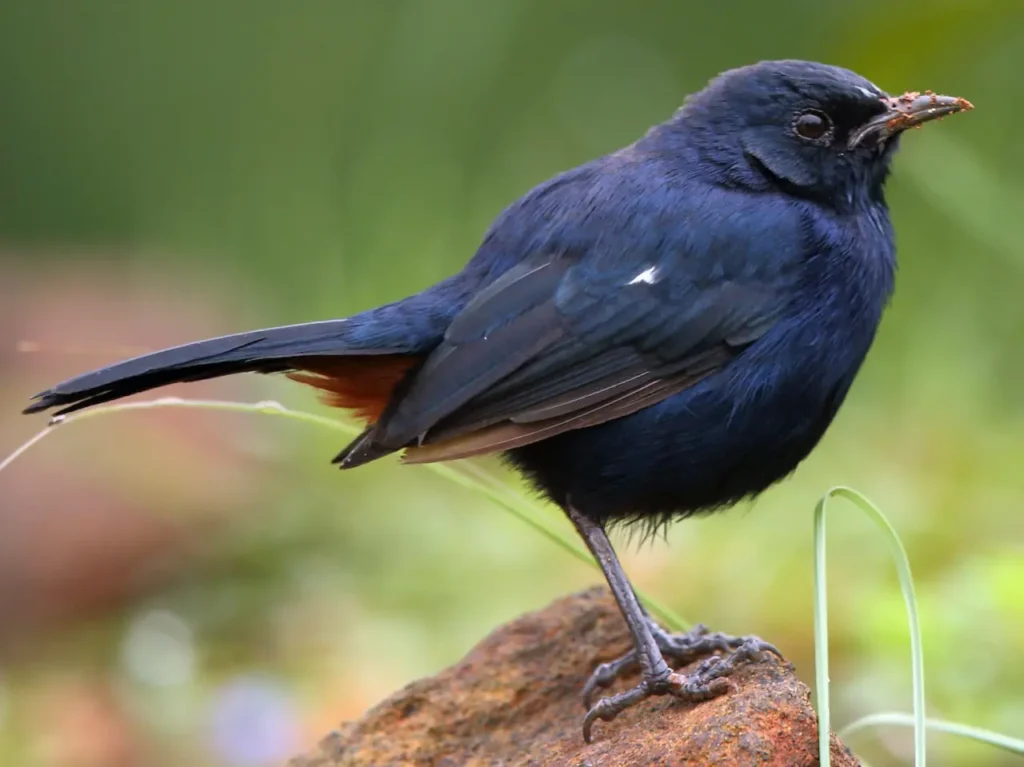
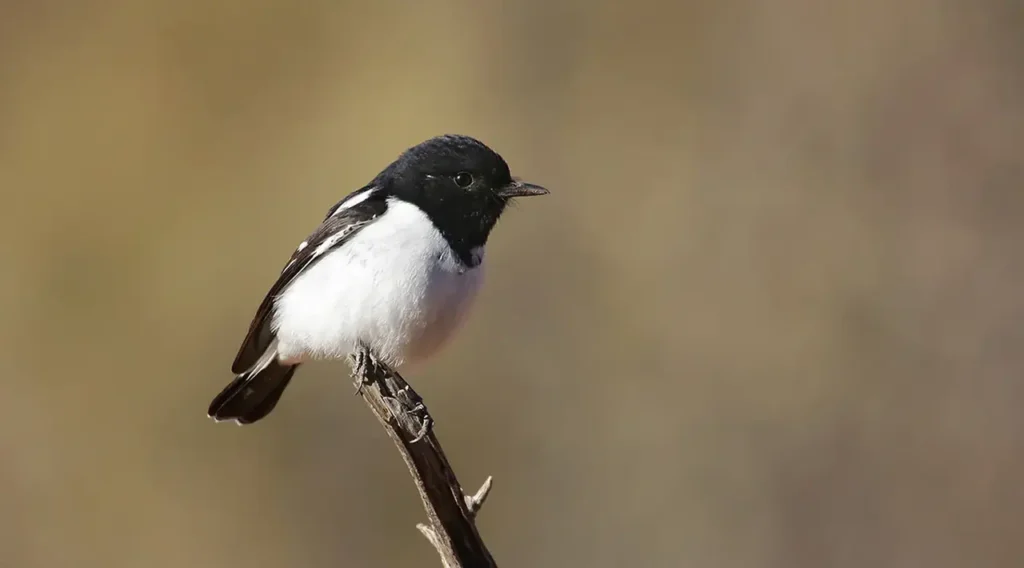
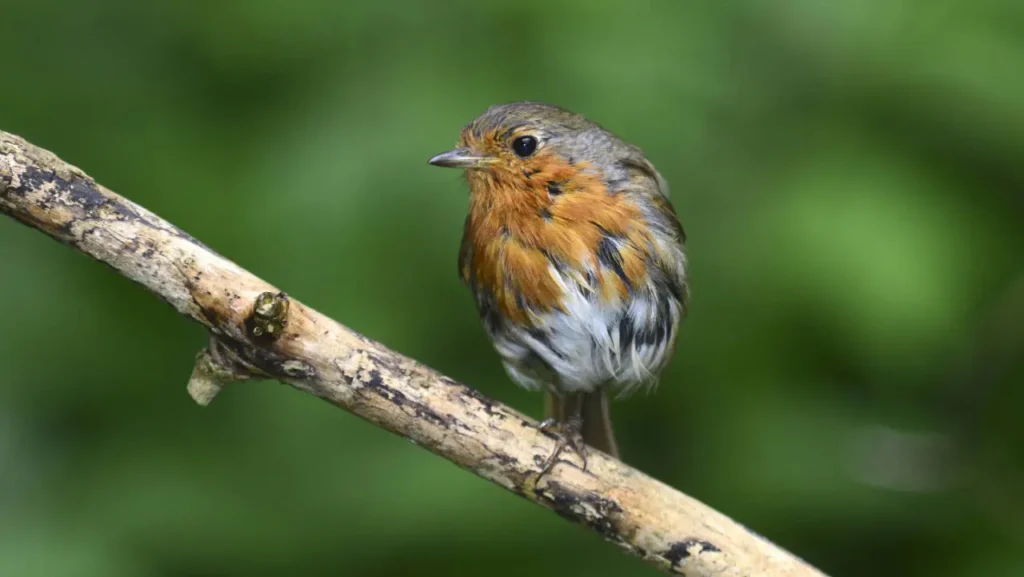
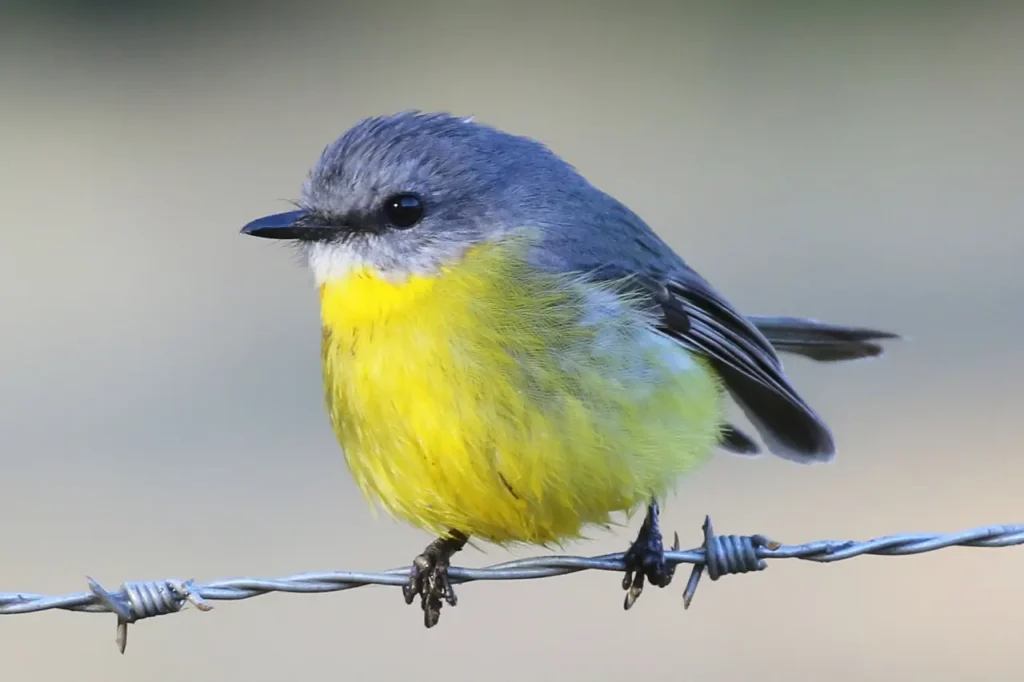
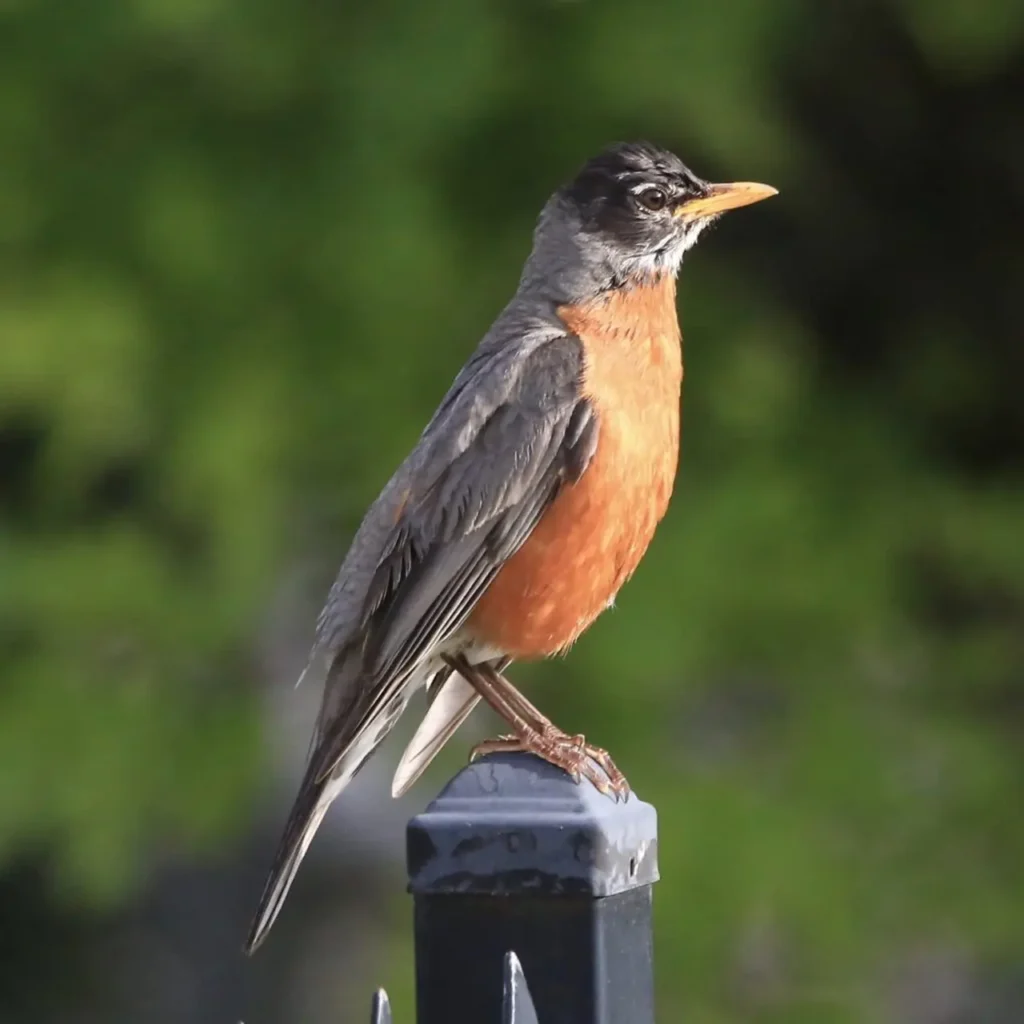
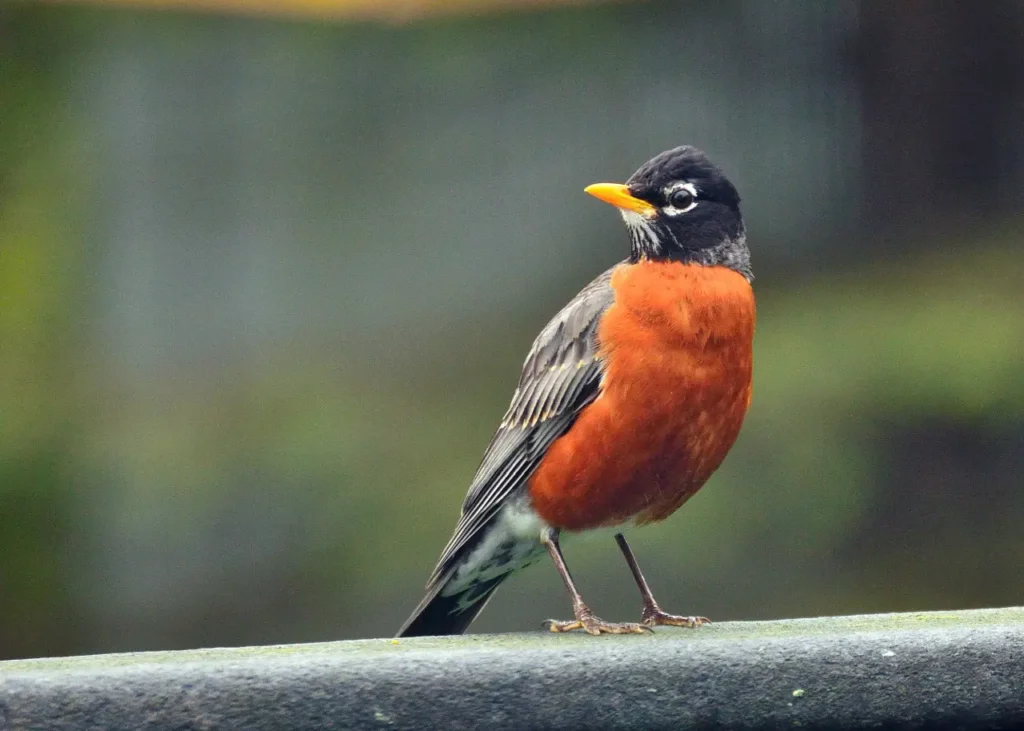
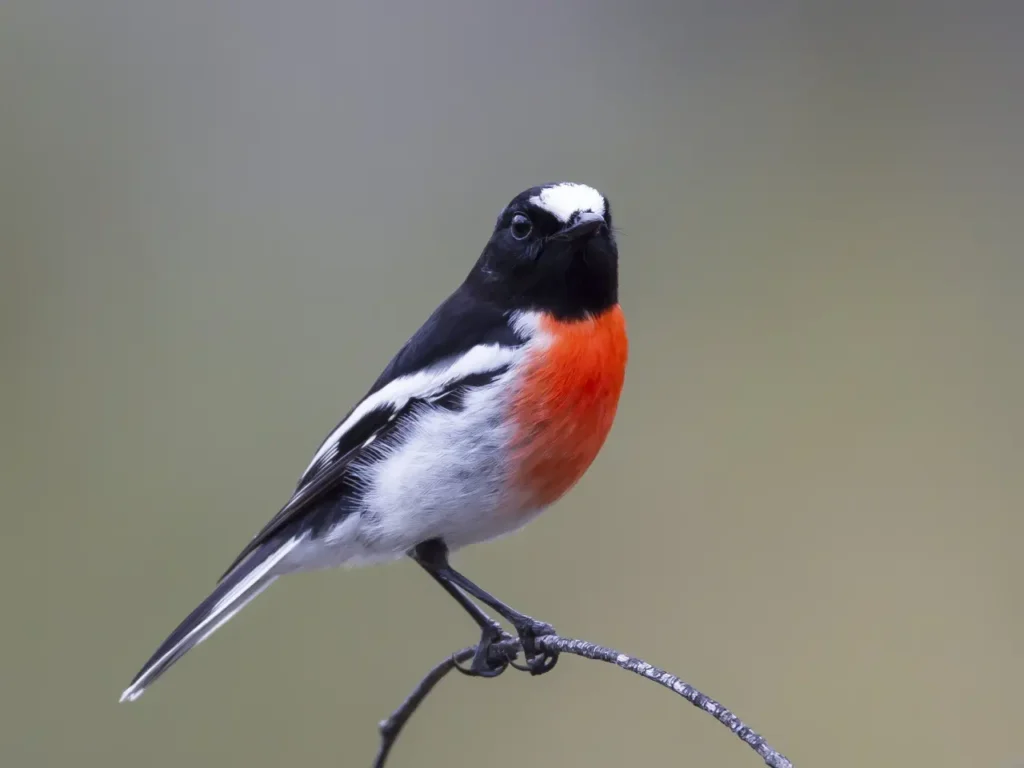
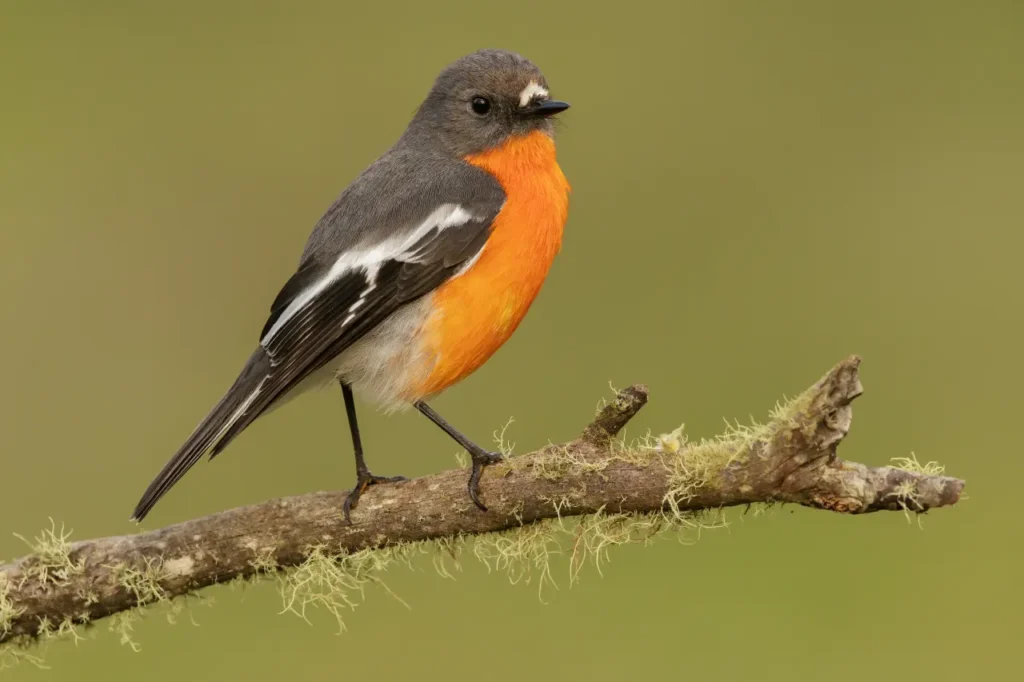
It’s important to note that the term “robin” can be used differently in various regions, and the appearance of these birds can vary widely. While they may share the name “robin,” these species are often unique in their appearance and behavior.
